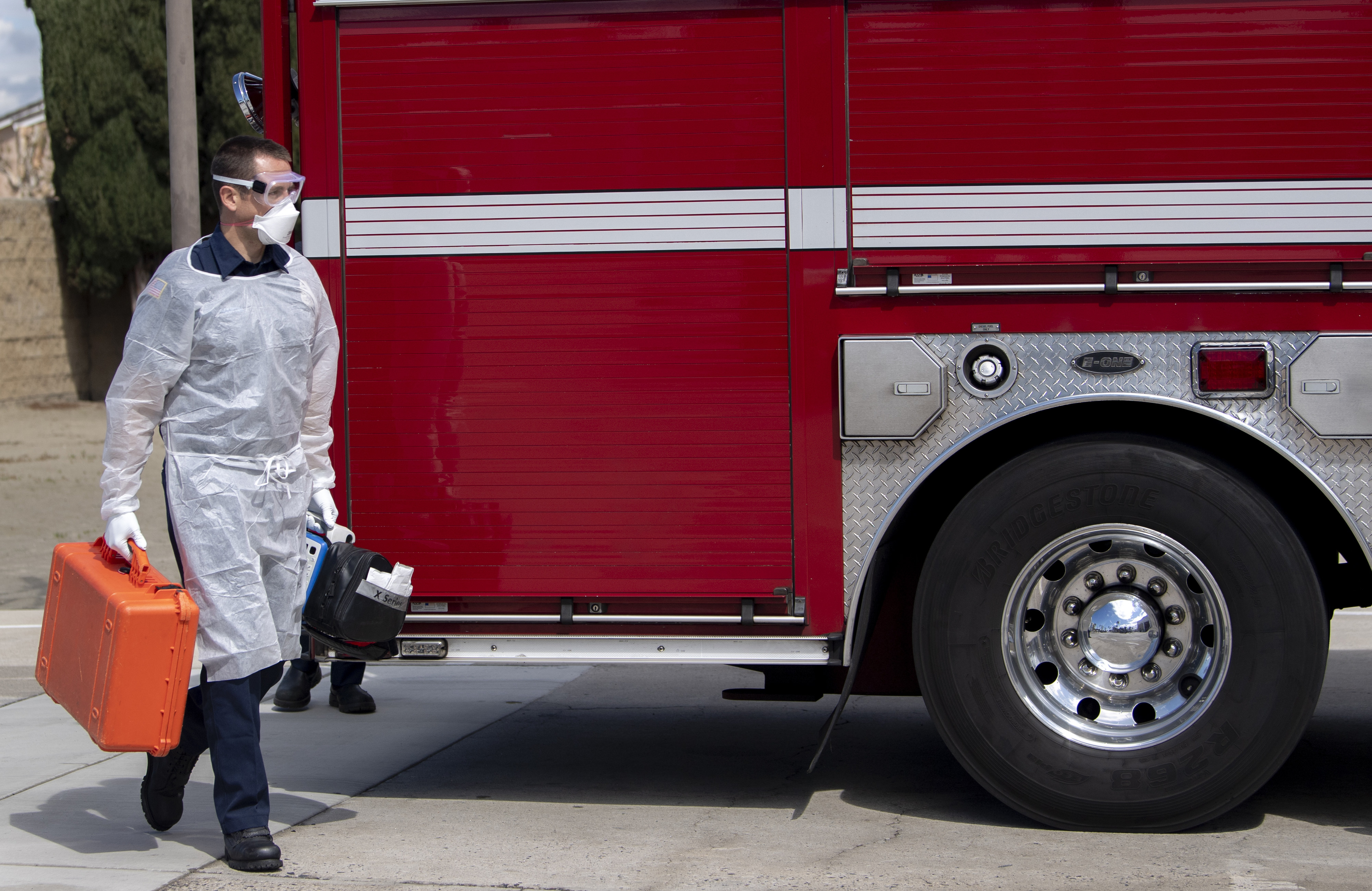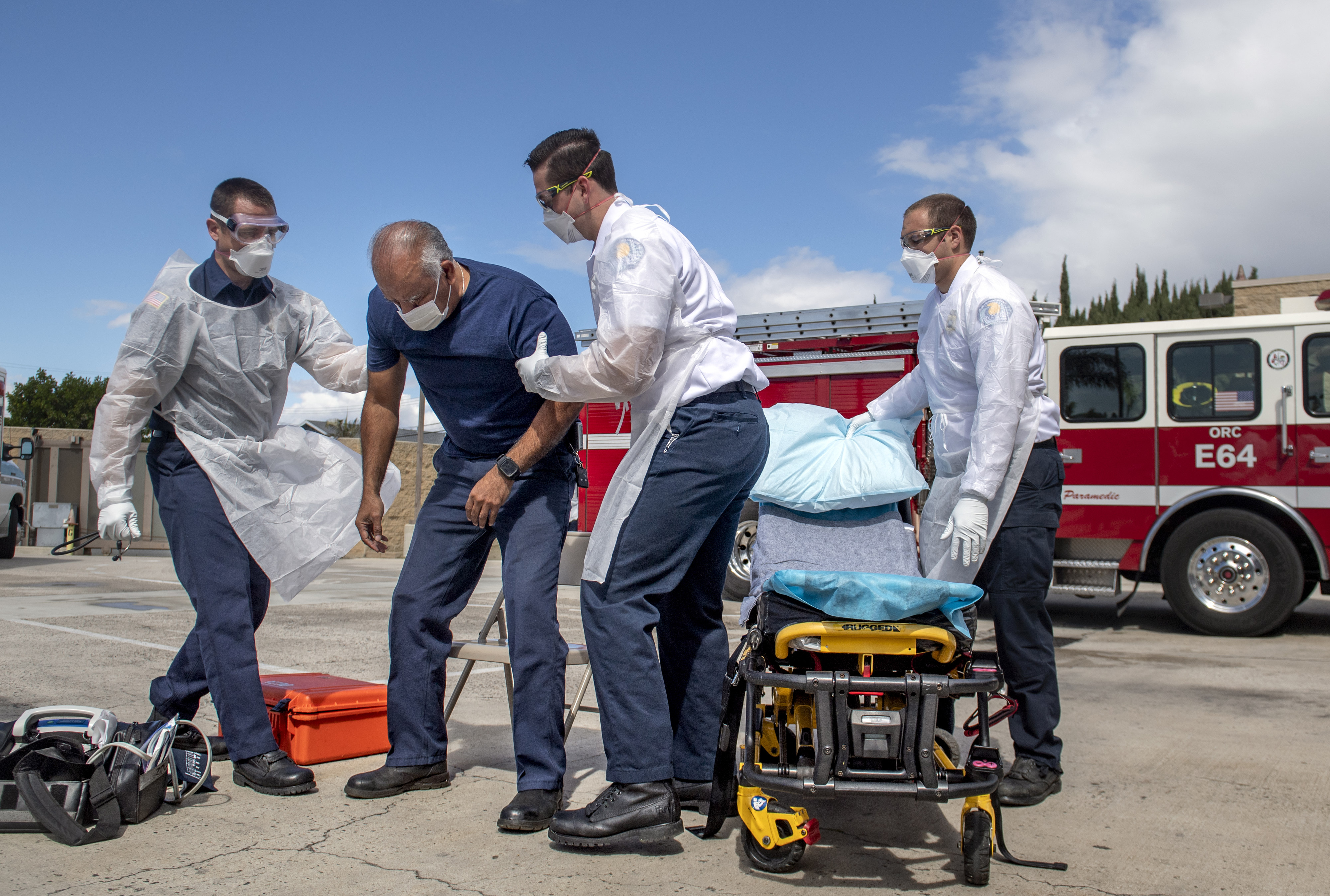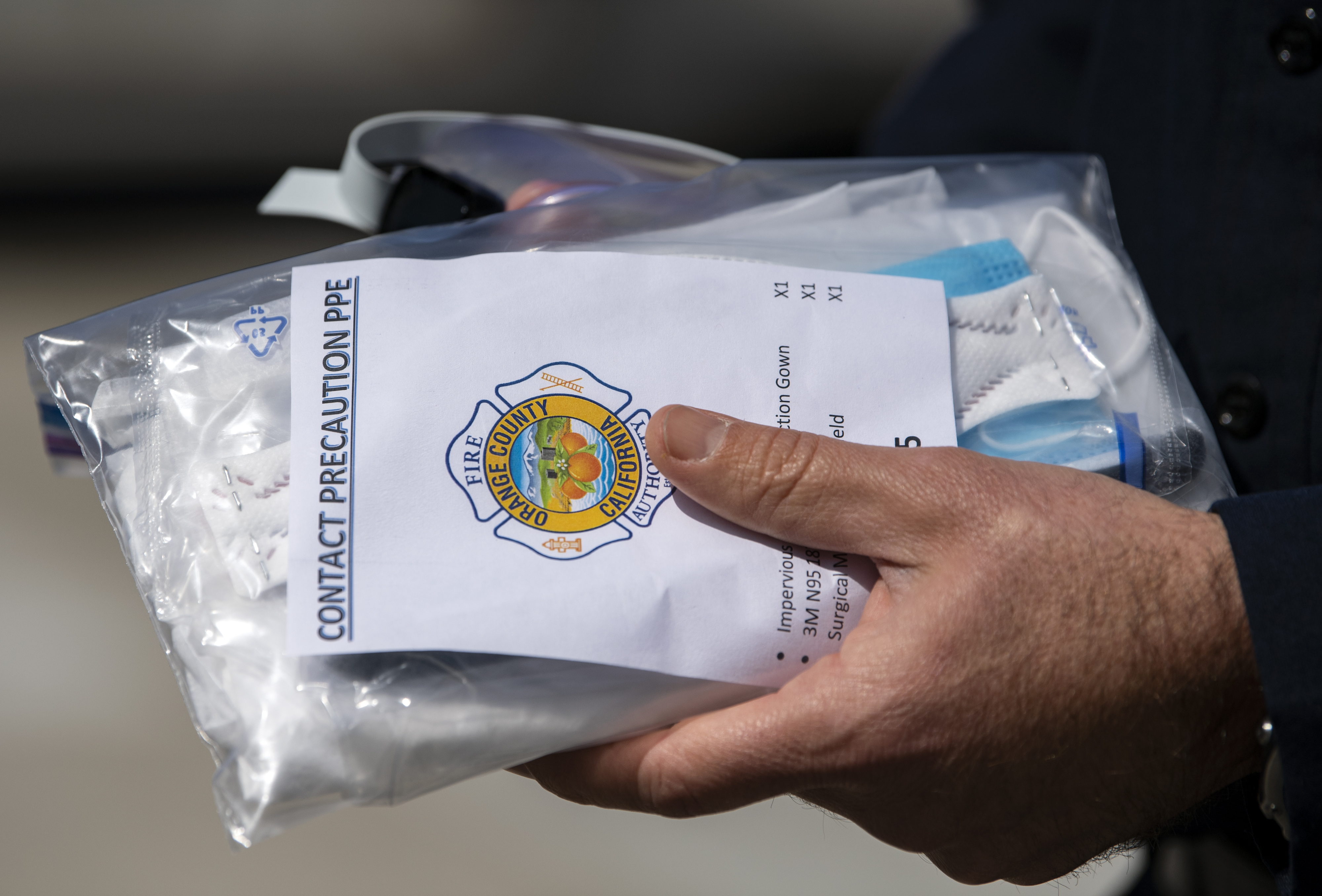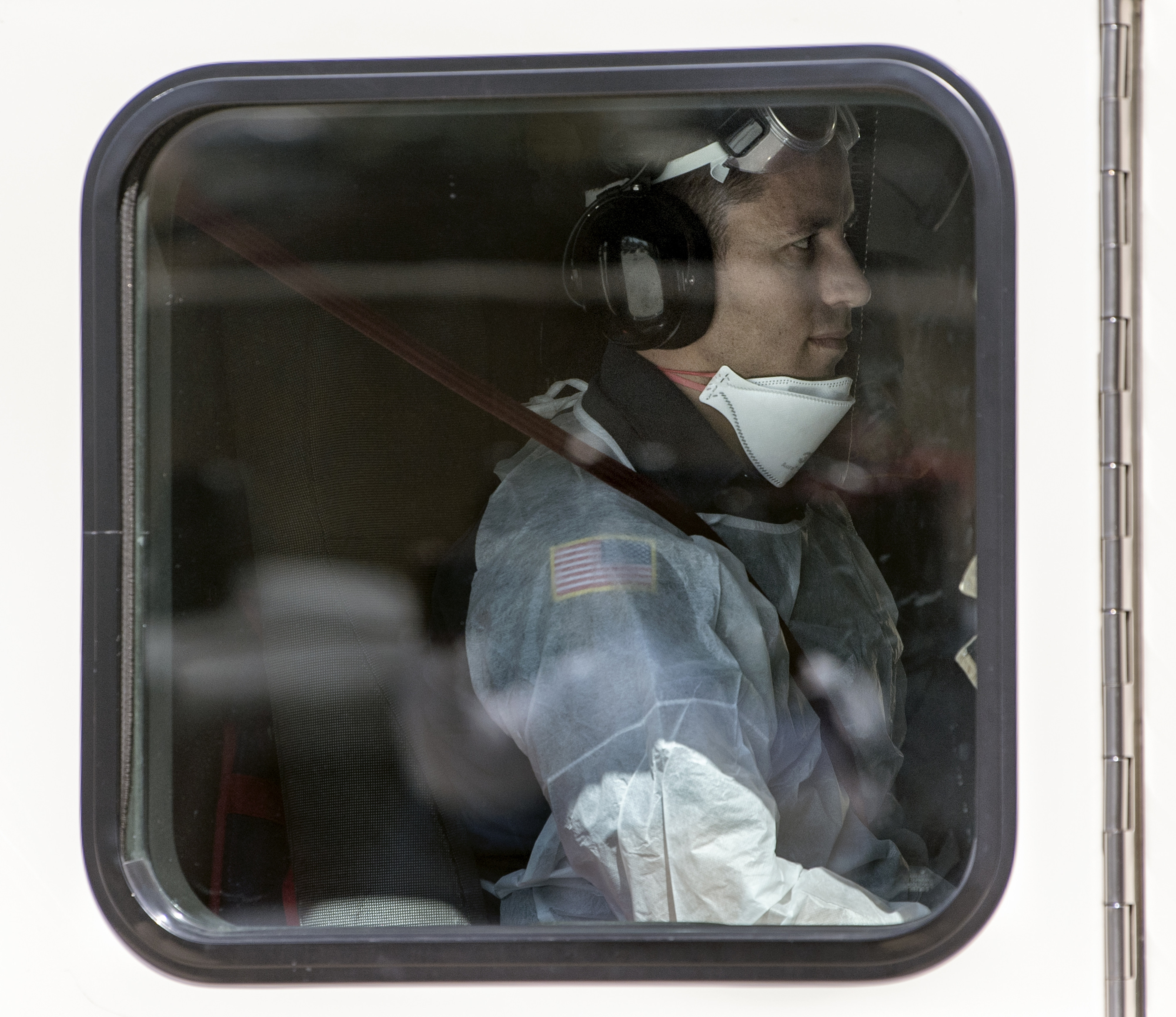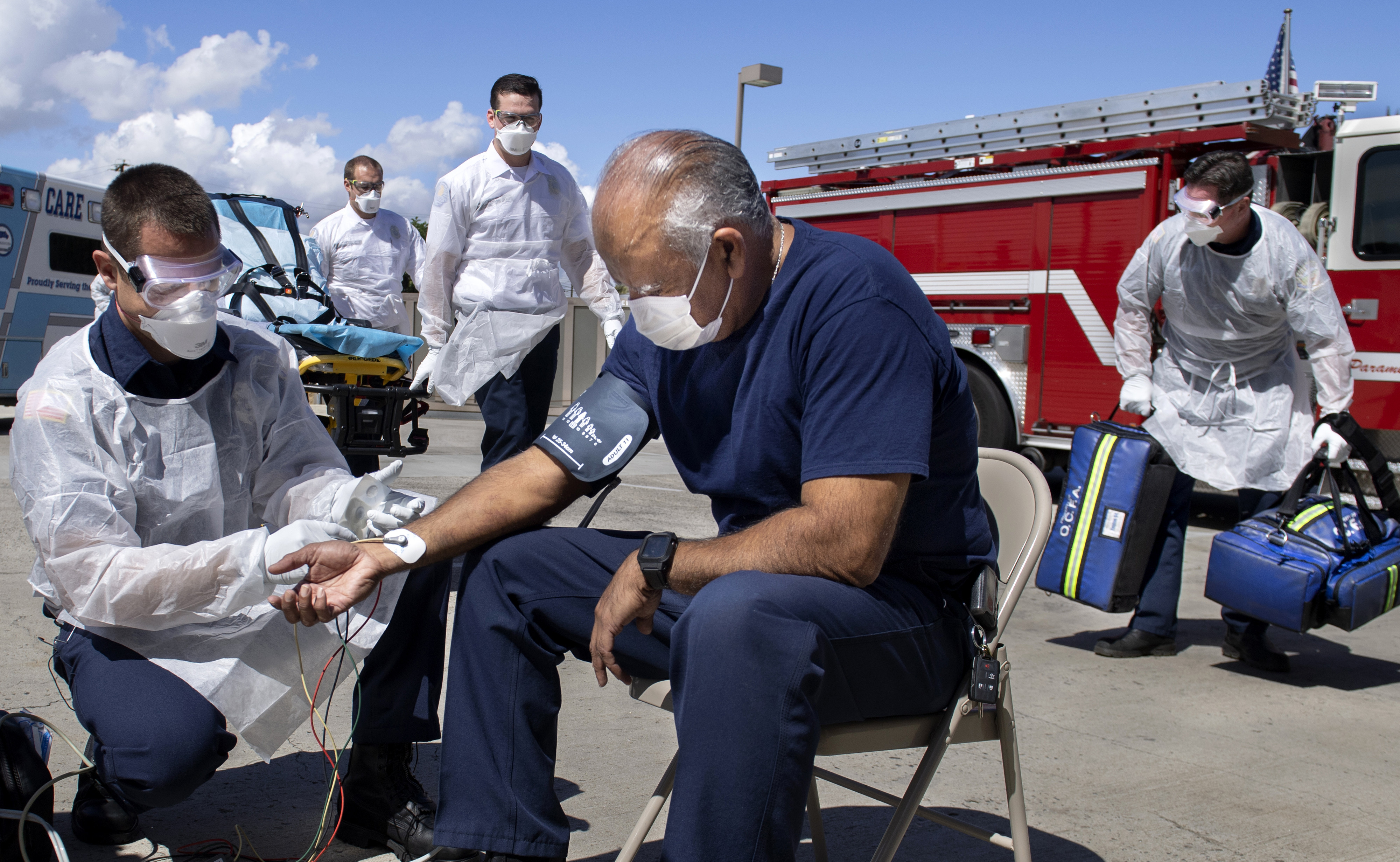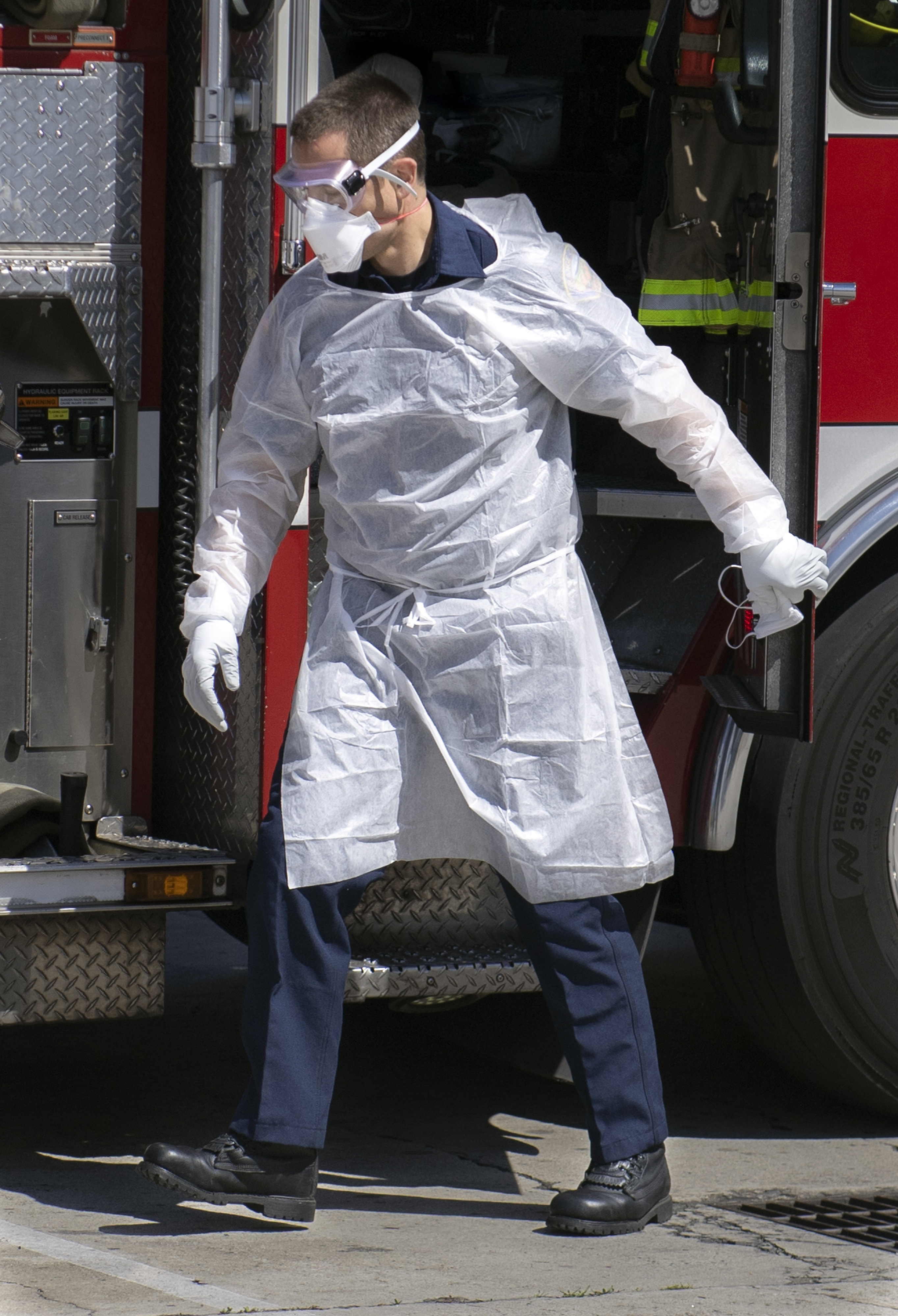Fire crews in Southern California taking extra steps to limit coronavirus spread
Fire crews across Southern California have begun taking special safety precautions in the field during the ongoing coronavirus outbreak, meaning some could arrive to emergency calls dressed in masks, gowns, gloves and goggles.
Some officials, like those with the Redlands Fire Department, asked residents not to be alarmed if they see firefighters arriving in gear that makes them appear to be working a hazmat situation.
“Please know we are doing everything we can to protect you and your loved ones as well as our own,” the department told residents and social media followers..
Departments around the Southland have implemented steps to ensure both patients and firefighters limit the spread of coronavirus during medical calls, officials said.
Some firefighters have been wearing the extra protective gear in the event a patient may have been exposed to the respiratory virus, officials said. Many calls lead to contact with a single firefighter, who assesses the patient and signals to the rest of the crew whether extra protective gear is needed, officials said.
However, the additional gear will be worn on a case-by-case basis, authorities said.
In Orange County, the first firefighter making contact with a patient at a scene will work to place masks on everyone as an added precaution, Orange County Fire Authority Capt. Jason Fairchild said. OCFA will provide the masks.
“With permission, we’re asking if we can place a mask on them,” Fairchild said. “It helps our firefighters limit their exposure because we don’t know exactly how this thing is spreading.”
OCFA developed additional guidelines for safety following previous disease outbreaks, like the H1N1 virus outbreak more than a decade ago, Fairchild said.
Departments have also been asking patients to meet firefighters outside the home, as long as it’s safe, in order to keep fire personnel out of confined spaces, said Henry Narvaez, a spokesman for the Los Angeles County Fire Department.
“The issue for us is we could very well be in 20 to 30 homes a day,” he said. “We could have been exposed on the first call of the day and then 24 homes later, didn’t know we were exposed and now we’re bringing it to other houses. We’re really trying to eliminate that exposure.”
But the precautions start with dispatchers, who have been asking 9-1-1 callers additional questions in hopes of determining whether a risk may be present.
“Our dispatchers are the first line of defense for responding crews and gather vital information on the patient’s condition, history and possibility of having COVID-19,” said Battalion Chief Mike McClintock of the San Bernardino County Fire Department.
Additional questions include recent travel outside of the country and whether they are presenting symptoms including fever, cough or shortness of breath, Narvaez said.
The dispatcher questions will occur while firefighters are en route to the location, said Capt. Fernando Herrera of CalFire, adding that call times have not been affected by the additional inquiries.
“We’re all pretty much following the same standard,” Herrera said. “We’re just taking it to the next level in being precautious.”









